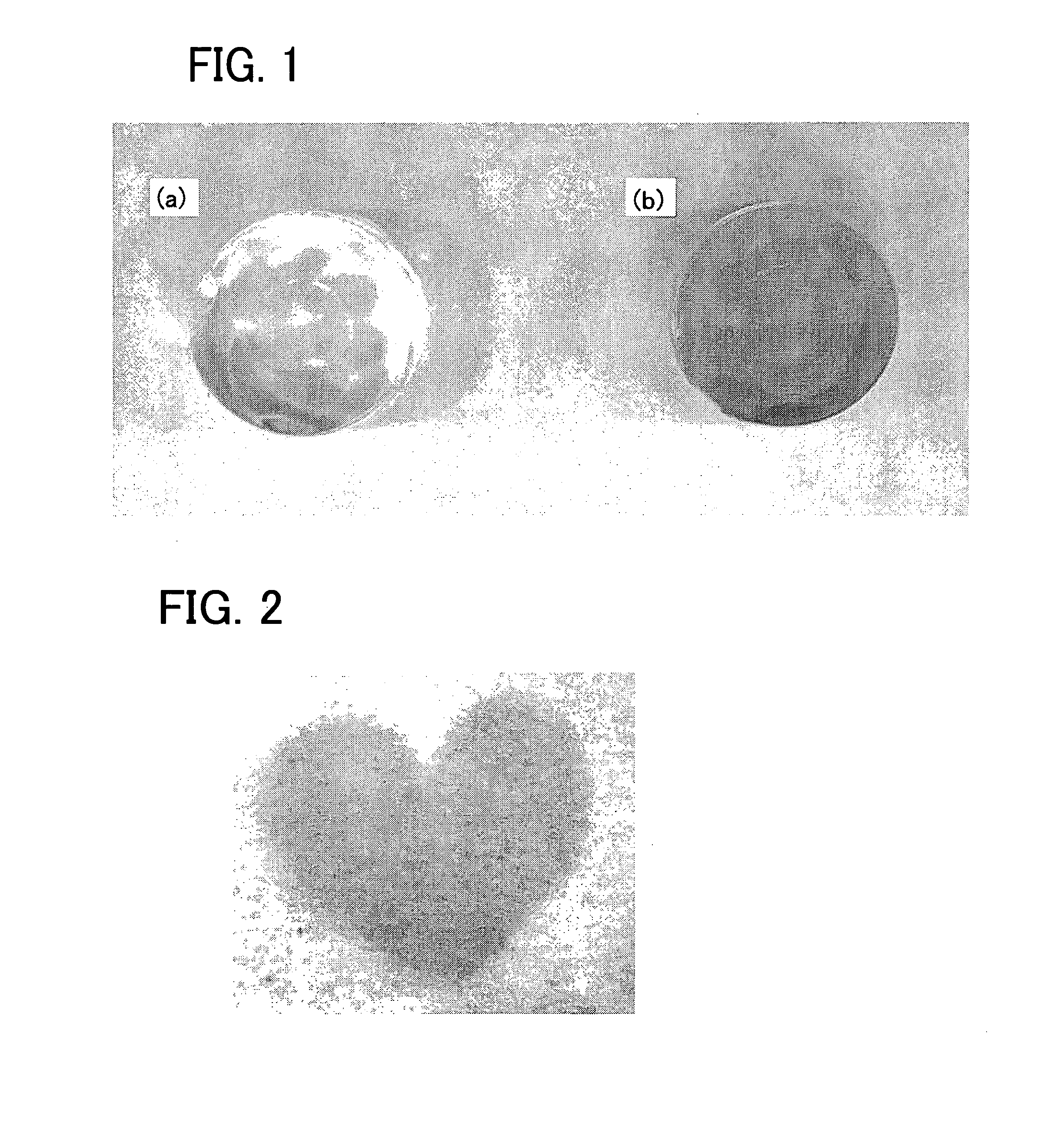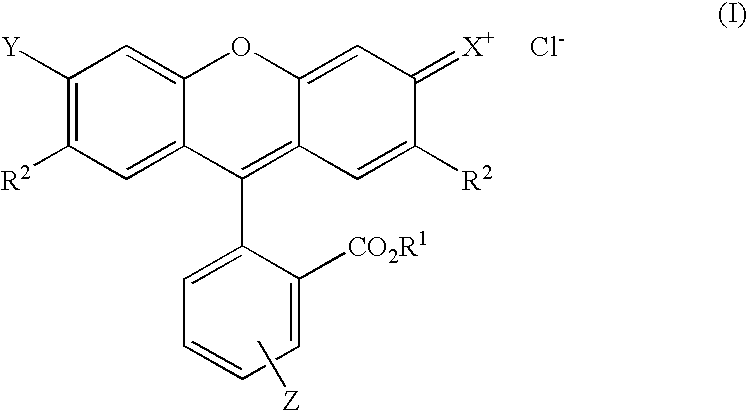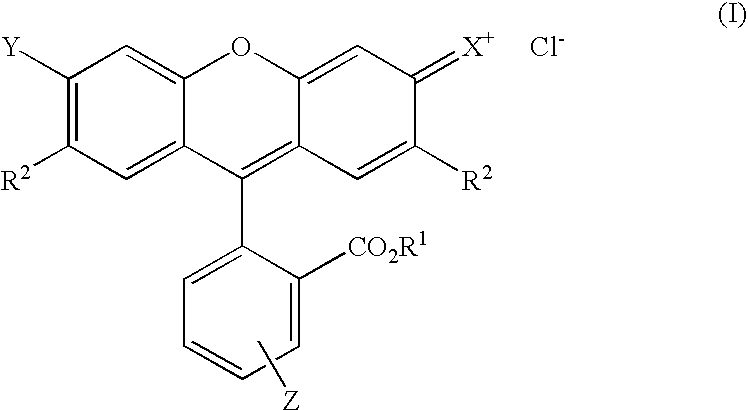Lens for eye and method for marking thereof
a technology for eye lenses and lenses, applied in the field of eye lenses, can solve the problems of high defect or rejection ratio of ophthalmic lenses, inability to develop color, and inability to meet the needs of eye care, so as to achieve the effect of still more effective color developmen
- Summary
- Abstract
- Description
- Claims
- Application Information
AI Technical Summary
Benefits of technology
Problems solved by technology
Method used
Image
Examples
examples
[0066]To further clarify the concept of the present invention, some examples of the invention will be described. It is to be understood that the invention is not limited to the details of the illustrated examples and the foregoing description, but may be embodied with various changes, modifications and improvements, which may occur to those skilled in the art without departing from the scope of the invention defined in the attached claims.
[0067]Production of an Ophthalmic Lens Material
[0068]Rhodamine B in the above TABLE 1 was obtained as the rhodamine derivative, while a methyl methacrylate and an ethyl methacrylate were obtained as the alkyl (meth)acrylate. There was also prepared an ethyleneglycol dimethacrylate, while tris(trim ethylsiloxy)silylpropyl methacrylate, tris(trimethylsiloxy)silylstyrene, and trifluoroethyl methacrylate were also prepared as the other polymerizable components (above-mentioned optional components). In addition, 2,2-azobis(2,4-dimethylvaleronitrile) was...
PUM
| Property | Measurement | Unit |
|---|---|---|
| wavelength | aaaaa | aaaaa |
| wavelength | aaaaa | aaaaa |
| temperature | aaaaa | aaaaa |
Abstract
Description
Claims
Application Information
 Login to View More
Login to View More - R&D
- Intellectual Property
- Life Sciences
- Materials
- Tech Scout
- Unparalleled Data Quality
- Higher Quality Content
- 60% Fewer Hallucinations
Browse by: Latest US Patents, China's latest patents, Technical Efficacy Thesaurus, Application Domain, Technology Topic, Popular Technical Reports.
© 2025 PatSnap. All rights reserved.Legal|Privacy policy|Modern Slavery Act Transparency Statement|Sitemap|About US| Contact US: help@patsnap.com



